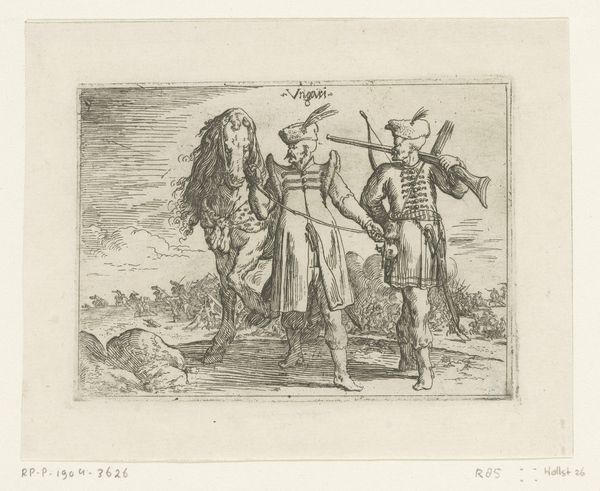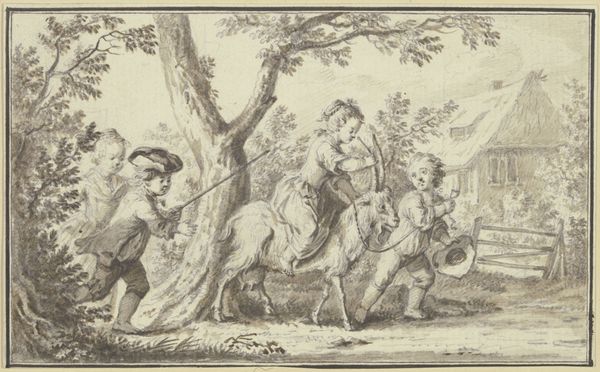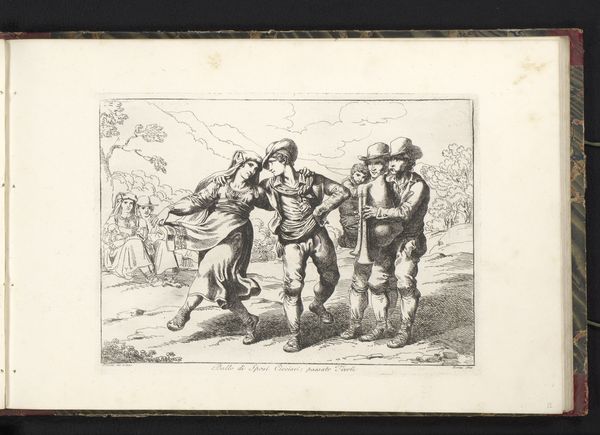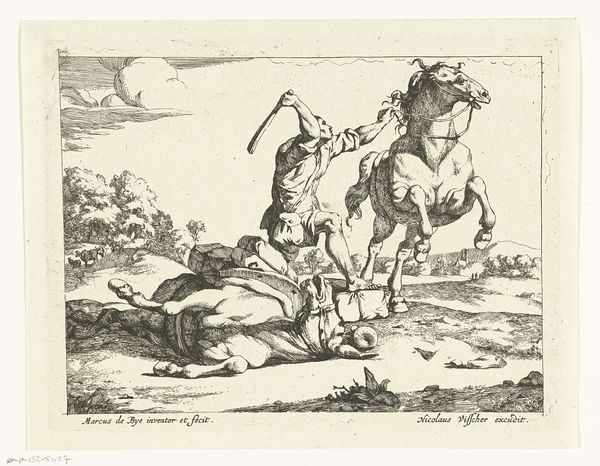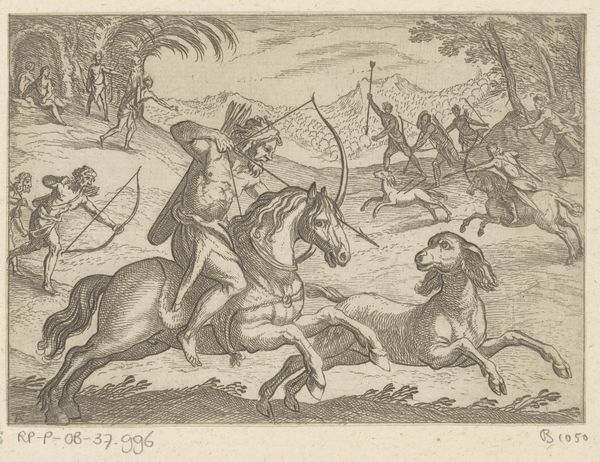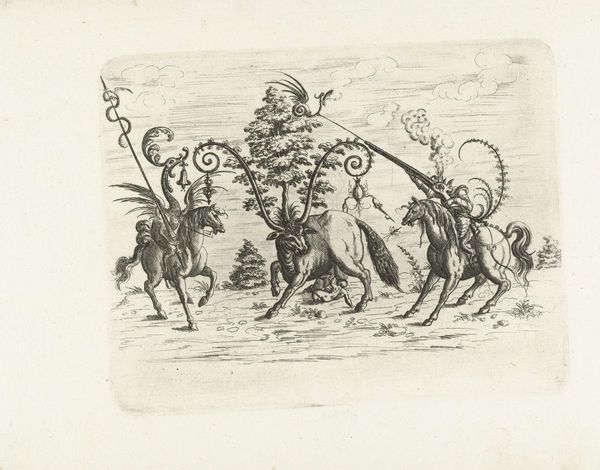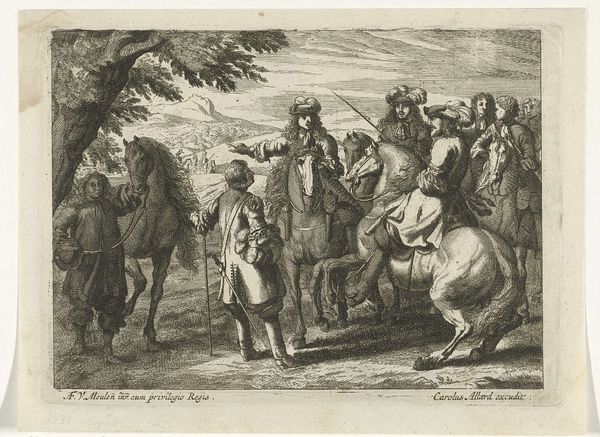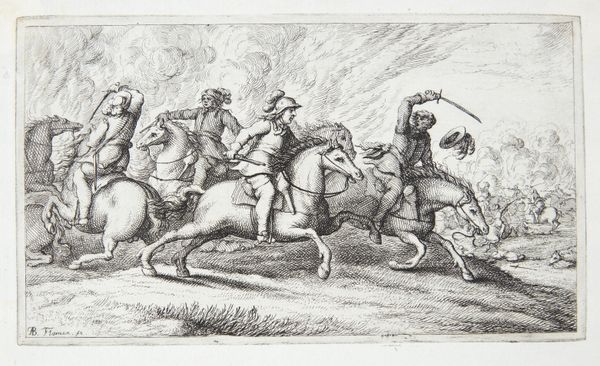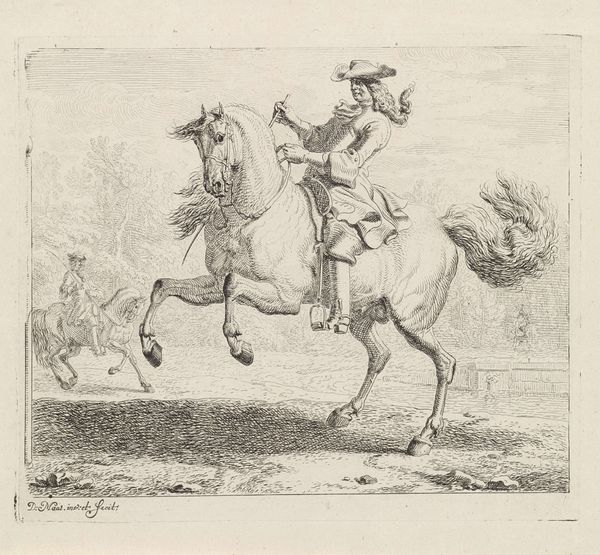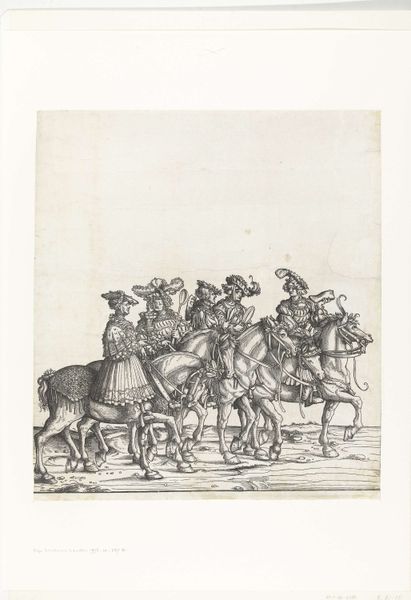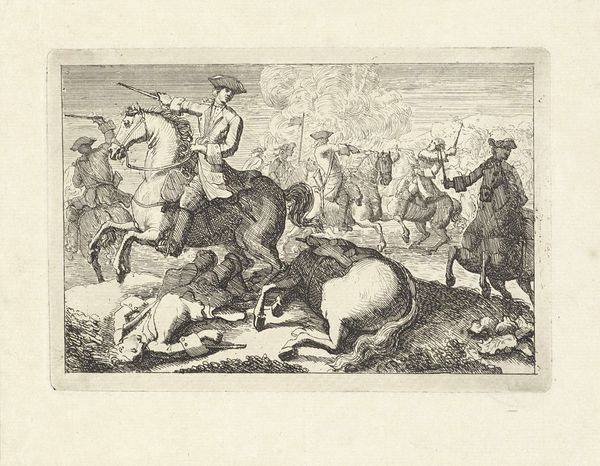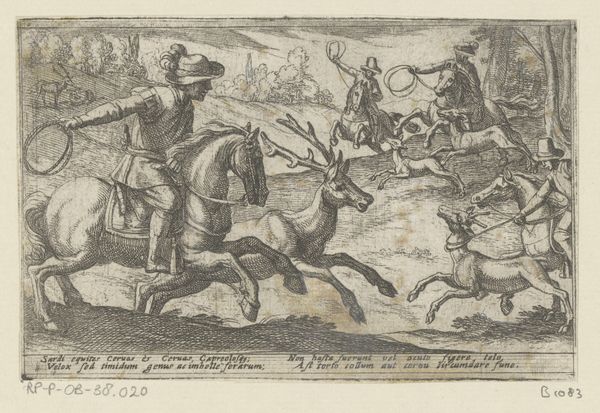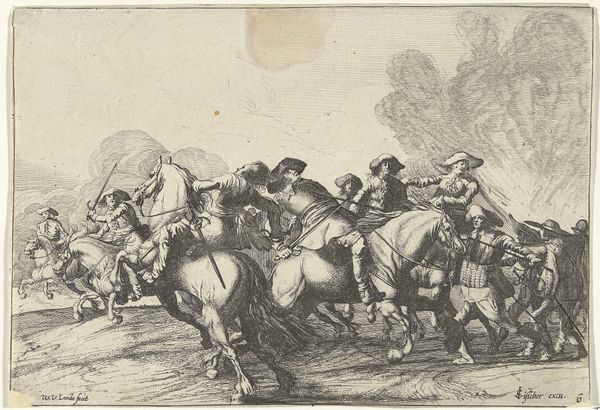
print, engraving
# print
#
caricature
#
figuration
#
genre-painting
#
engraving
Dimensions: height 150 mm, width 211 mm
Copyright: Rijks Museum: Open Domain
Curator: What do you make of this engraving, "Dancing Monkeys in a Circle", dating approximately from 1733 to 1792, and attributed to Jean Baptiste Guélard? Editor: Well, it's certainly striking. The image is quite light, both tonally and in mood, though the subject matter, these dancing anthropomorphic monkeys, borders on the bizarre, and perhaps even satirical. Curator: Satire indeed. Such imagery, where animals stand in for human figures, was often used to critique social norms and political figures without directly naming them. Think of it as a form of coded dissent, reflecting broader power dynamics. These weren't simply innocent illustrations. Editor: Right, and looking at the figures themselves, the detail in their garments is impressive for an engraving. The clothing, likely mimicking human styles of the time, suggests a deliberate commentary on class and social roles through their crafted image. I am struck by the deliberate detail used, likely employing techniques used with reproductive prints of artworks. Curator: Absolutely. And note the circle—the very composition points to cycles of behavior or societal structures from which there seems to be no escape. Consider who would consume this image and what messages they'd decode about the hierarchies being lampooned. The materials themselves, the ink, the paper, allowed for mass production, enabling subversive ideas to circulate widely. Editor: There's also something unsettling about these hybrid creatures, especially within the social rituals they appear to be mimicking. We need to think about who has been historically considered "othered", who is on the margin and if that can apply to this scene. I suppose we would consider the history of depicting those of other ethnicities this way and what power implications exist there. Curator: Precisely, the act of mirroring allows us to confront some uneasy truths. Where might we recognize the caricatures within ourselves? And in our culture at large? It brings up the power dynamics we each inhabit, that have historical impacts still felt. Editor: It leaves you with a sense of disquieting wonder. The artist crafted a stage and put his dancing monkeys on. A spectacle within reach. Curator: A spectacle whose implications echo far beyond the moment of its creation, wouldn’t you agree? A strong statement given the tools at his disposal.
Comments
No comments
Be the first to comment and join the conversation on the ultimate creative platform.
